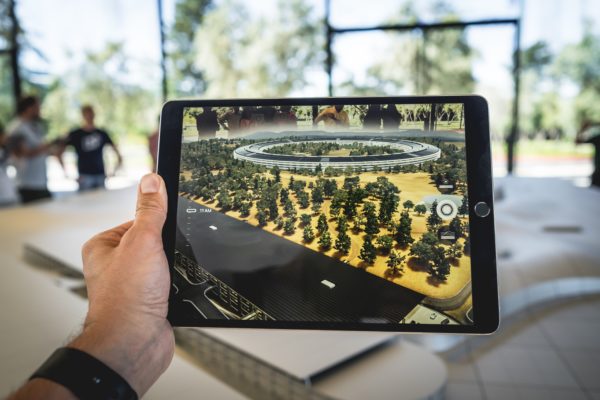Deakin’s Professor of Smart Sensing Rosanne Guijt is developing trail-blazing applications in agriculture, environmental management and health.
Innovative ways to provide long-term and day-by-day (bio)chemical data on-site to enhance productivity, welfare and security are the focus of Deakin University’s new Professor of Smart Sensing Rosanne Guijt.
Professor Guijt has no doubt that the opportunities resulting from the convergence of chemical sensing, separation science, big data analytics, nanomedicine and miniaturisation will benefit modern life in many ways over the coming decades.
“As a result of these advances, researchers around the world are working on applications in bioprocessing, environmental monitoring, personalised medicine, and (bio)security, among many other areas,” she said. In addition to the applications, Professor Guijt’s group at CeRRF also addresses the manufacturability of these devices, using injection moulding, as well as Guijt’s expertise in the use of 3D printing for microfluidics.
With over 15 years of research experience across the disciplines of health, chemistry and engineering, Professor Guijt brings a rare, but extremely valuable breadth of expertise to her role. Having completed an undergraduate degree in Biopharmaceutical Sciences, she began her career with a PhD across biotechnology and electrical engineering from Delft University of Technology (Netherlands), before heading to the University of Tasmania where she spent 13 years working within the Schools of Chemistry and Medicine.
She received an Alexander Humboldt Fellowship for two 12-month research stays in Germany (one in academia with Professor Andreas Manz at Korea Institute of Science and Technology (KIST) Europe, Saarbrücken, and one in industry at the Microfluidic Chip Shop (Jena), which she completed before joining Deakin’s Centre for Regional and Rural Futures (CeRRF) in July.
[testimonial_text]It is a great opportunity to be at Deakin. Cross disciplinary research positions like this are rare. My work aligns closely with the research at CeRRF, but I will also collaborate with researchers in the Centre for Pattern Recognition and Data Analytics, the Centre of Chemistry and Biotechnology, the Institute for Frontier Materials and the Centre for Integrative Ecology, as well as the CSIRO AAHL laboratory.[/testimonial_text]
[testimonial_picture name=”Professor Rosanne Guijt” details=”Centre for Regional and Rural Futures”]
 [/testimonial_picture]
[/testimonial_picture]Professor Guijt has worked on the medical applications of miniaturised systems, such as lab-on-a-chip technology, to bring chemical analysis from the lab to the patient (“point of care” diagnosis).
“Therapeutic drug monitoring of small molecules could allow us to tailor dosages of pharmaceuticals such as antibiotics, anti-rejection drugs for implants or anti-psychotic drugs much more specifically,” she said.
“The fast response time would have significant benefits for a patient’s health. This technology could be extremely useful in rural health.”
Professor Guijt is equally enthusiastic about the potential of (bio)chemical sensing in animal husbandry and biosecurity. One of her research strands at CeRRF centres on enabling farmers to improve the health of livestock through early detection of disease. A device developed at CeRRF is capable of detecting avian influenza from a throat swab in under 90 minutes on-site, a significant improvement when compared with the turnaround time of tests conducted in a laboratory. The team at CeRRF is currently working towards commercialisation of this device.
She and her colleagues are also working on further applications for detecting other viral or bacterial infections in livestock.
Funded by the Australian Meat Production Corporation, she is developing a system for the early detection of harmful bacteria on carcasses with a team at the University of Tasmania; technology that will potentially minimise economic loss in the meat industry.
She is also planning on identifying stress in animals through chemical markers that reveal chronic stress.
“Many consumers are becoming concerned about animal welfare,” she said.
“Being able to show that animals have been poorly treated through bad transport practices or very small cages, for instance, could motivate some farmers to improve their practices.
“Chemical analysis from a hair sample or a feather (which stores chemical components over time) may tell us the quality of life of that animal.”
In water management, she is working on devices to test water quality – identifying fertiliser, pesticide and other contaminants – resulting from irrigation and other practices.
“In Tasmania, we developed a small portable system to be used in paddocks to monitor run-off. In the past, farmers may not have focussed on minimising their impact on the environment. With our understanding of the importance of environmental sustainability, we now know it is not just about maximising yield, but about maintaining a delicate balance between production and sustainability.
Underpinning this understanding with hard data will enable us to move from decisions based on gut instinct to informed decision making.
“Automated, in-field micro analysis and separation science are allowing us to move from taking one sample, measuring it and responding to that test, to understanding how chemistry is changing over time.
“A lot of factors need to be considered to understand a situation at a moment in time. In traffic, for instance, a single photograph of a car struck at an intersection tells us an incident has happened. However, only a dash cam will give us a movie of the incident enabling us to see what happened, moment by moment, and what/who is to blame. The technological advances in making chemical analysis deployable, automated and autonomous will enable us to see a time-resolved chemical image that allows us to stitch a more complete story together.
“Automation of the chemical measurement process gives us time-resolved data for analysis – revealing how (bio)chemical processes have been progressing in animals, fields and the environment.”
Published by Deakin Research 17 August 2017



